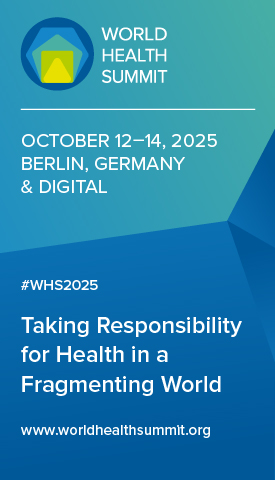The climate crisis is a health crisis
The world is standing on a precipice that will determine the future of humanity’s survival. At the crux of the climate and health nexus is a choice to change the status quo, ending the pandemic of expedient and poor choices and understanding that investments in a stronger health system are savings, not costs
Climate change is an existential threat to humanity. Up to 3.3 billion people globally are highly vulnerable to the effects of climate change. Collectively, we face an unknown future defined by increased extreme weather. Decades of inaction have led us to this moment. Elevations in global greenhouse gas emissions are fuelling extreme heat, accelerating changes in our environment, and harming our global biodiversity.
We too often fail to remember, however, that the climate crisis is a health crisis. Climate change is killing us.
According to the World Health Organization, one in four deaths today is attributable to a preventable environmental cause. Seven million people a year die from air pollution – more than died in the entire Covid-19 pandemic globally. Over the next decade, we will see an additional 250,000 deaths per year and increased morbidity for millions of people suffering as a result of the climate’s amplification of non-communicable disease, vector-borne disease, maternal and neonatal emergencies, and mental illness.
Climate change not only brings increased deaths. It destroys livelihoods. Extreme heat in India – where heat-related deaths increased 55% between 2017 and 2021 – resulted in a loss of 167.2 billion potential labour hours in 2021 alone, equivalent to about 5.4% of the country’s gross domestic product. These economic losses most frequently affect those already vulnerable, accelerating pre-existing inequities and driving even further gaps in the poor’s ability to access needed resources. The World Bank estimates that up to 132 million people around the world will enter poverty by 2030 as a direct result of the health impacts of climate change.
Overwhelmed systems
As the climate and health crisis worsens, our already stressed health systems are increasingly overwhelmed. Events, such as the recent floods in Pakistan and Cyclone Freddy in Southern Africa, show how climate change exploits the already well known cracks in our healthcare systems – not only destroying physical infrastructure, but also taxing limited human resources, and highlighting the failure of health financing and governance. Pakistan had achieved the near elimination of malaria in some provinces, but saw a four-fold increase to more than 1.6 million cases after the 2021 floods. In Malawi, the worst cholera outbreak in the country’s history was caused by severe storms brought on by climate change. In South Africa, drought has introduced food insecurity and disrupted the access to and provision of HIV services.
The fragility of our health systems today should be well understood. Covid demonstrated their profound vulnerability: as the pandemic shut down our economic systems, consumed our health resources and challenged our commitment to equity, we saw years of progress reversed. Over 90% of countries saw disruptions in health services, leading to increased deaths from preventable causes, as well as trillions in GDP losses, and a surge in poverty.
There is hope.
We now have an opportunity to learn from the mistakes of the past. We must meet this crucial moment with a new approach – one vested in our collective well-being and one that prioritises people and health equity, and properly values social investments as a global public good.
A new approach
First, we must embrace the fact that good human health is the fundamental building block to every aspect of a flourishing society. Without robust and expansive physical and mental well-being, individuals, communities and countries cannot grow their economies or gain long-term security and political stability.
Second, we must not respond to the climate crisis with the old approaches used in global health or international development. For too long, our investments in health have been largely siloed, technocratic and disease-focused. Short timelines too often driven by Global North funding agendas rarely affected the priorities of the communities and countries purported to be served. The result has been piecemeal progress in a few select disease areas at the consequential expense of helping countries build resilient, fit-for-purpose, comprehensive healthcare systems that can handle repeated shocks. We only need to look at the examples of Ebola and Covid to understand that a health system without a solid across-the-board foundation will always be vulnerable. It is time to stop thinking segmentally. We need to embrace the complexity of building strong healthcare systems in their entirety. A holistic approach centred on health system strengthening – long-term financing, strong governance, management and leadership, updated infrastructure, reliable supply chain operations, and a fit-for-purpose skilled workforce to deliver care – is the best adaptation investment to address the inevitability of climate change.
Third, we need to accept that investments in strengthening a health system are savings, not costs. In the dominant neoliberal order, health expenditure is all too frequently sacrificed for fiscal austerity. By bankrupting the public health sector, we only leave ourselves more vulnerable. We end up paying more in lost productivity or reactionary funding when health emergencies strike. Investments in reducing air pollution, for example, will prevent a future loss of the almost $50 trillion that has been spent since 2010 to address its consequences. Studies have shown the economic return of every dollar invested in health is at least $4. Focusing on prevention and the adoption of known healthcare interventions could increase the GDP of lower-income countries by $4.4 trillion by 2040. As these investments lead to better health, they grow economies, create jobs, and foster social inclusion and gender equity, as women comprise around 70% of the health workforce – with returns as significant as nine to one.
Finally, we must invest more ambitiously – with flexible funding that is context sensitive, in line with local priorities, equity focused and longer time horizons. Health system strengthening takes time. Training a necessary workforce, building infrastructure, developing reliable supply chains and cultivating good governance have never occurred in a two-year funding cycle, let alone a five-year one.
Today we are standing on a precipice that will determine the future of humanity’s survival. At the crux of the climate and health nexus is a choice about whether we are willing to change the status quo. Recent history has shown us unequivocally that we can no longer afford to suffer from the pandemic of poor and expedient choices that continues to harm our planet and its population. We cannot choose to continue down a road to nowhere with marginal and reactive, donor-driven investments. We must take an ambitious, comprehensive, long-term and equitable path – the only route that offers the possibility of leading all of us to a more just and hospitable world.












